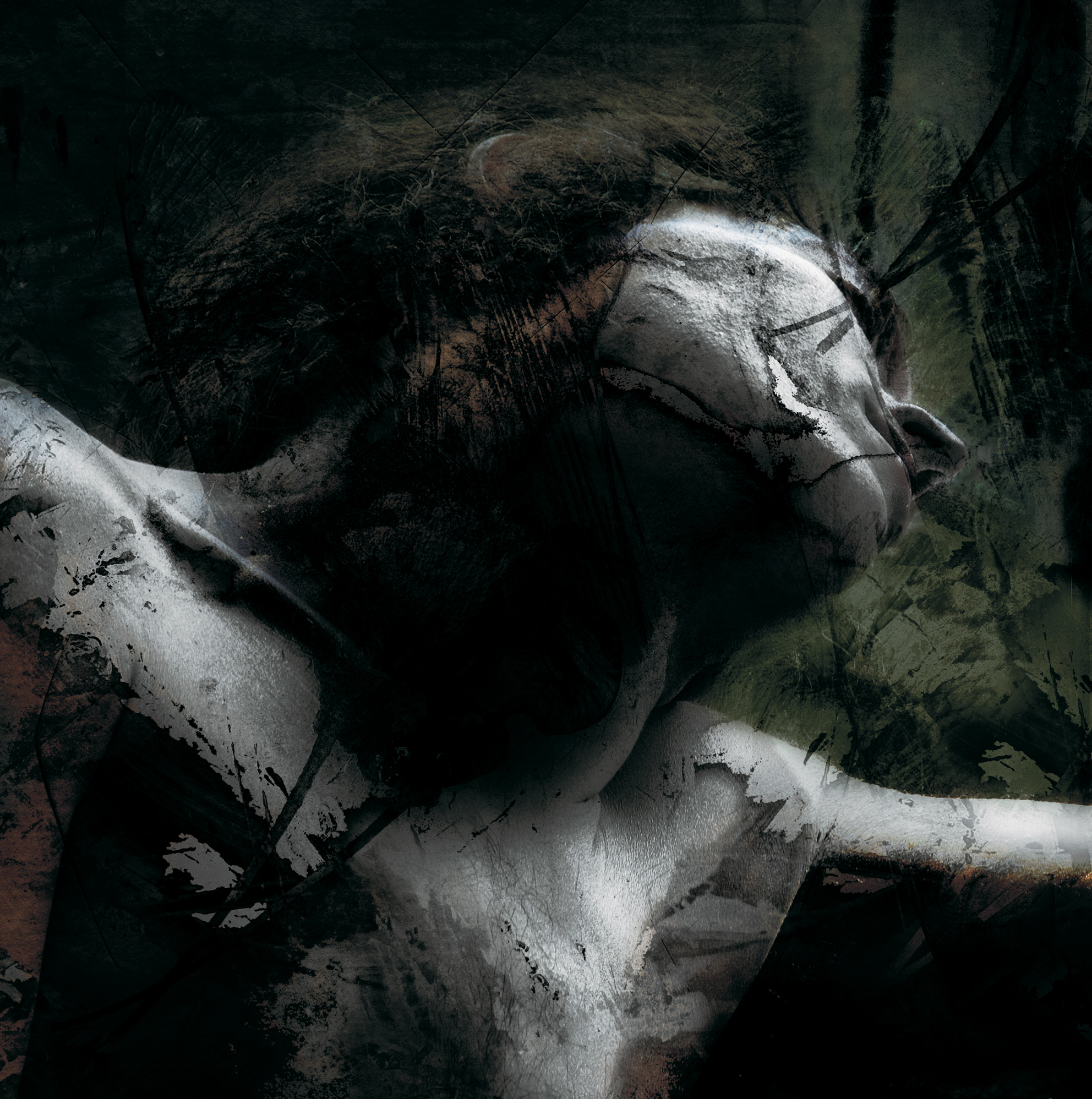Sandra Sue’s work is so enigmatic that it defies categorization. Even describing it as photography would be untrue. Closer to painting in terms of how the final composition is conceived, it is explorative both psychologically and artistically – leaving you wondering about the complexities of her creative process.
Defining her work proved a challenge for Sue herself, until she coined the word “digitography”. “I’ve always had difficulties in naming what I do and I finally came to adopt this word to define it,” she explains. “For it is in a way digital writing, not only in the computerized sense, but also in the physical sense. I work with my hands, and in the end what I do is translated to a numerical language.”
Photography is the starting-point. After taking the initial photographs, Sue scans them on to her computer, adding images of light and abstract perspectives, and then “painting” over them on Photoshop. Post production, sometimes only a residue of the original remains. Chiselled faces now appear powdered, bronzed, ashed, chalked. The contours have been partially erased through layers and layers of digital painting, until the person’s identity is obscured. Brush-strokes and flashes of colour, resembling smears of blood, veneers of wood, streaks of paint and rubbings of gold, have transformed the surface. The realism of the photograph has been replaced by the non-realism of the digitograph, with elemental abstraction melting into the portrait.
Illustrating how this effect is achieved, Sue says, “I photograph lights during the night, with a low speed so what I get is like a brush-stroke of light. Then I use that brush-stroke on top of a face, I erase parts of it in a special way and combine this image with the face so that it ends up looking like a textile texture or a wooden element. It is not easy, it takes a lot of work and people just don’t realise that you can use anything and manipulate it with imagination to make it look like something you want.”
Sue’s experimental techniques are extremely forward-looking, but she looks backwards for inspiration about how to use light and human expressions. It is Renaissance artists such as Titian, Mantegna and Massaccio that bear a pictorial influence on her work.
Born in Middlesex near London, Sue – who has a Spanish mother and an American father – has been living in Spain since she was four. After studying photography at the Spectrum gallery in Zaragoza and at the Centre of Video Studies (CEV) in Madrid, she worked as a freelance photographer for ten years before starting to teach Photoshop and digital photography at the CEV.
The fascination with double realities is also linked to the fact that she has an identical twin sister. “Being a twin affected me ever since people started regarding us as a team and bought the same gift for both of us or expected us to be the same person,” she says. This, in turn, led to experimenting with dualities. “I would mix half of my face with half of my twin sister’s face to see what sort of individual would turn out. The subject of my being a ‘half’ of some abstract identity has always been part of my work.”
While her sister became a painter, Sue decided to paint digitally to create an invented version of a photographic reality. Her curiosity about the possible outcomes of combining “the other” with “self” is prevailing.
“In a conventional sense of the word, a painted or photographic image called a ‘self-portrait’ would give us the mirror-image of an individual. Nothing is for me further away from the individual than a stopped-in-time image that ignores the movement, the laughter, the character, the way the eyes shine, how this individual uses words, what books he reads, what activity he uses to make life worth living, etc. For me, it is all this that gives a portrait of the artist and his work. This series of torn men, drowned in a sea of unrecognisable elements that suggest vague disasters are part of me. They are part of my portrait, my entire and ‘perfect’ portrait and in this sense I called them ‘self-portraits’.”
Significantly, Sue studied philosophy before becoming an artist. Preoccupations about identity, and consciousness versus unconsciousness as the mind alternates between day and night, permeate her work. “I have always had baroque dreams with indescribable images in which I was sometimes a woman, sometimes a man, but was always an individual in extreme situations. Being a pacific and happy person in my conscious life, violence and panic is something common every night.”
Her other motivation in calling these images ‘self-portraits’ was to play with expectations, tricking us into seeing a woman where there is a man. Sue likes to invite her viewers to contemplate her images, and decide for themselves what we see before them. It relates to the vital ownership of thoughts and opinions. Asked about her future projects, Sue replies, “I want to be the owner of my silences. My next project is to sit on a chair and watch the wind move the branches of the trees.”
TEXT BY ANNA SANSOM
©picture Sandra Sue
Courtesy Galería Begoña Malone, Madrid.

